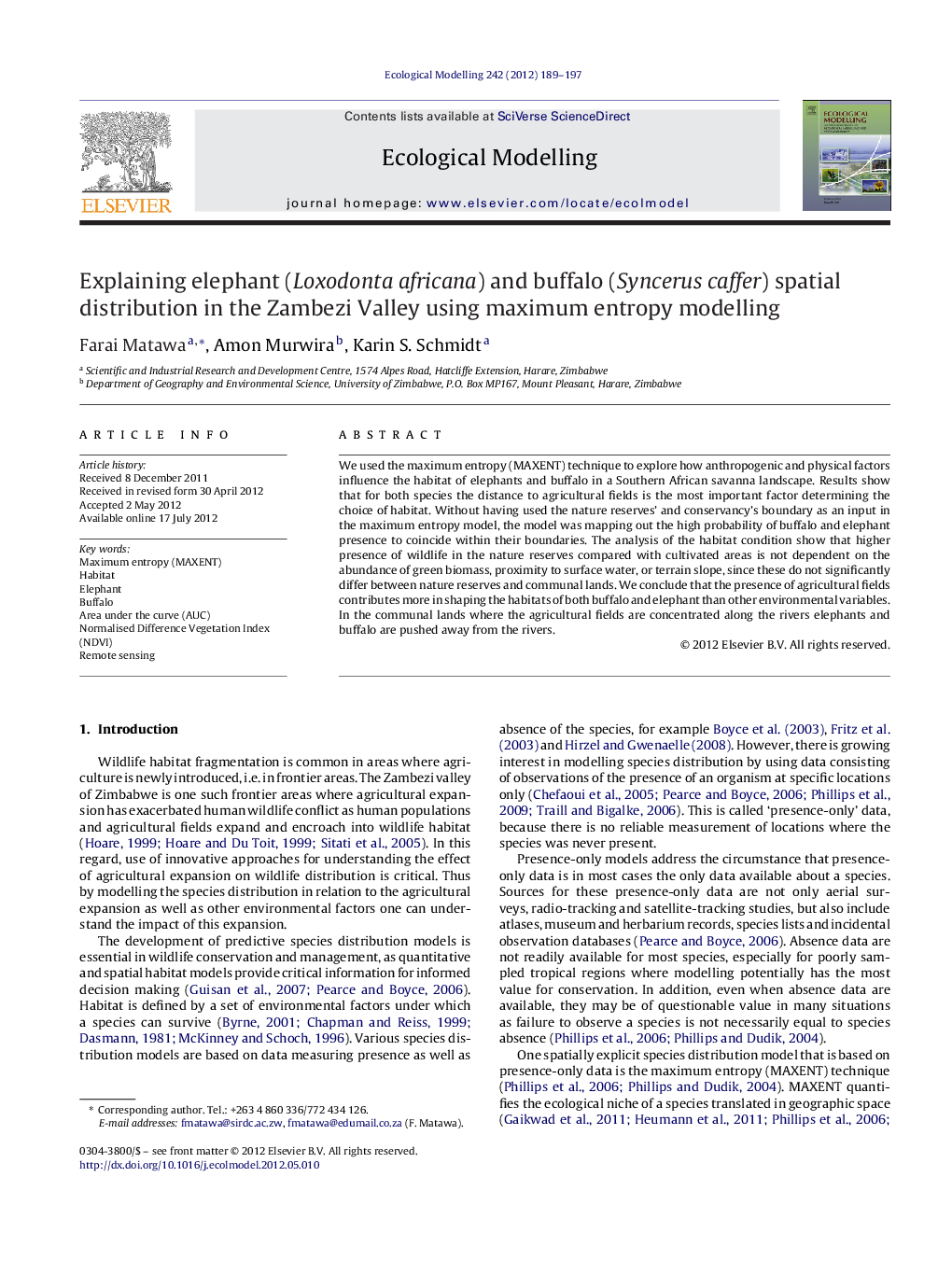| کد مقاله | کد نشریه | سال انتشار | مقاله انگلیسی | نسخه تمام متن |
|---|---|---|---|---|
| 4376384 | 1617503 | 2012 | 9 صفحه PDF | دانلود رایگان |

We used the maximum entropy (MAXENT) technique to explore how anthropogenic and physical factors influence the habitat of elephants and buffalo in a Southern African savanna landscape. Results show that for both species the distance to agricultural fields is the most important factor determining the choice of habitat. Without having used the nature reserves’ and conservancy's boundary as an input in the maximum entropy model, the model was mapping out the high probability of buffalo and elephant presence to coincide within their boundaries. The analysis of the habitat condition show that higher presence of wildlife in the nature reserves compared with cultivated areas is not dependent on the abundance of green biomass, proximity to surface water, or terrain slope, since these do not significantly differ between nature reserves and communal lands. We conclude that the presence of agricultural fields contributes more in shaping the habitats of both buffalo and elephant than other environmental variables. In the communal lands where the agricultural fields are concentrated along the rivers elephants and buffalo are pushed away from the rivers.
► MAXENT correctly mapped out the probability of wildlife presence in a landuse mosaic.
► The choice of habitat by wildlife is influenced by its distance to agricultural fields.
► There is need to balance expansion of cultivation and wildlife conservation.
Journal: Ecological Modelling - Volume 242, 10 September 2012, Pages 189–197